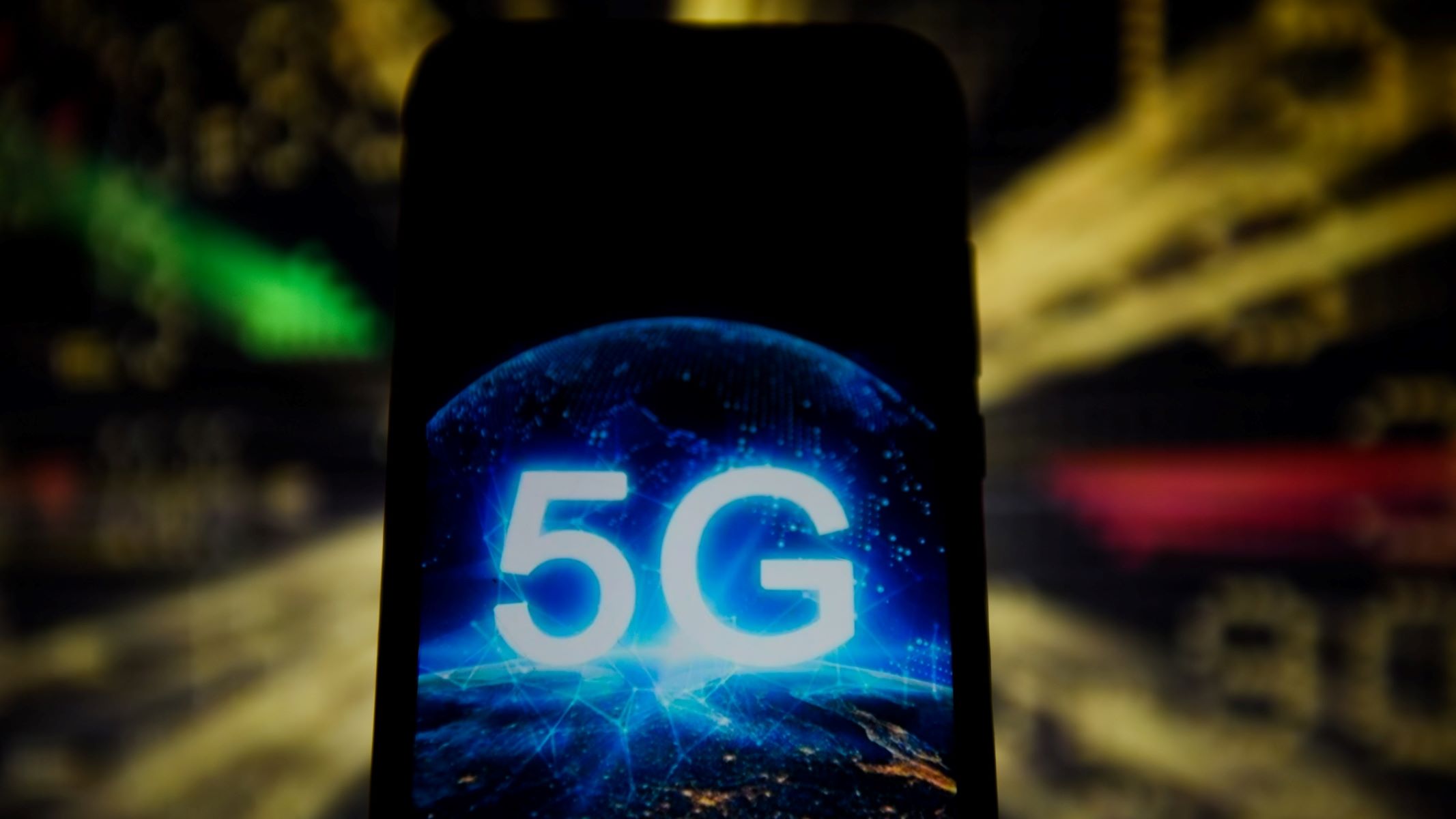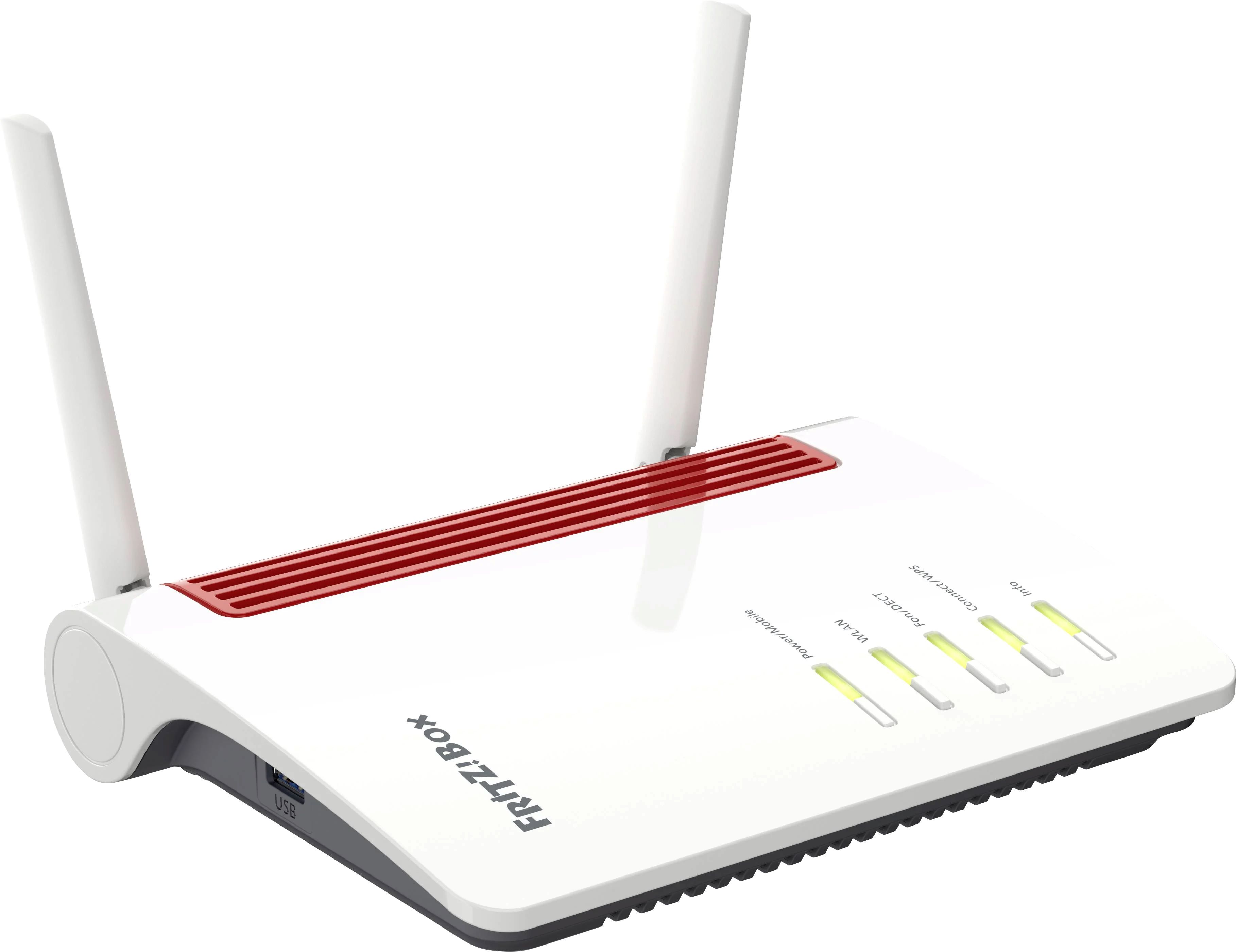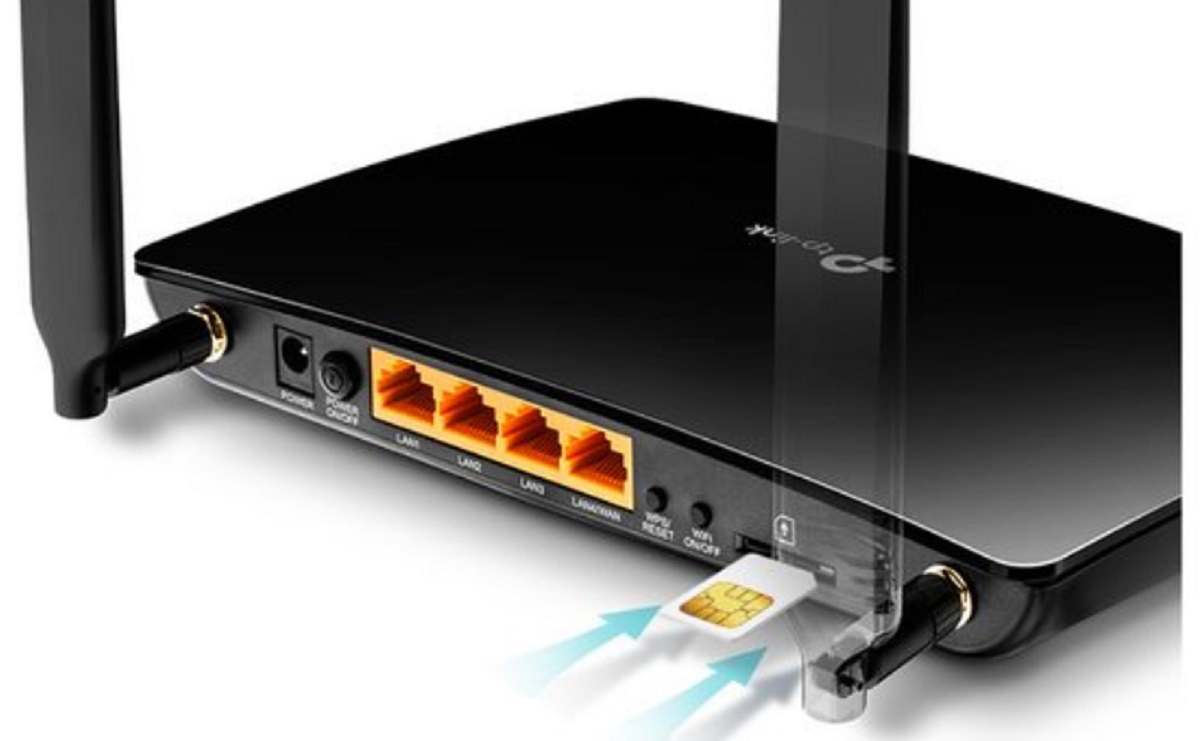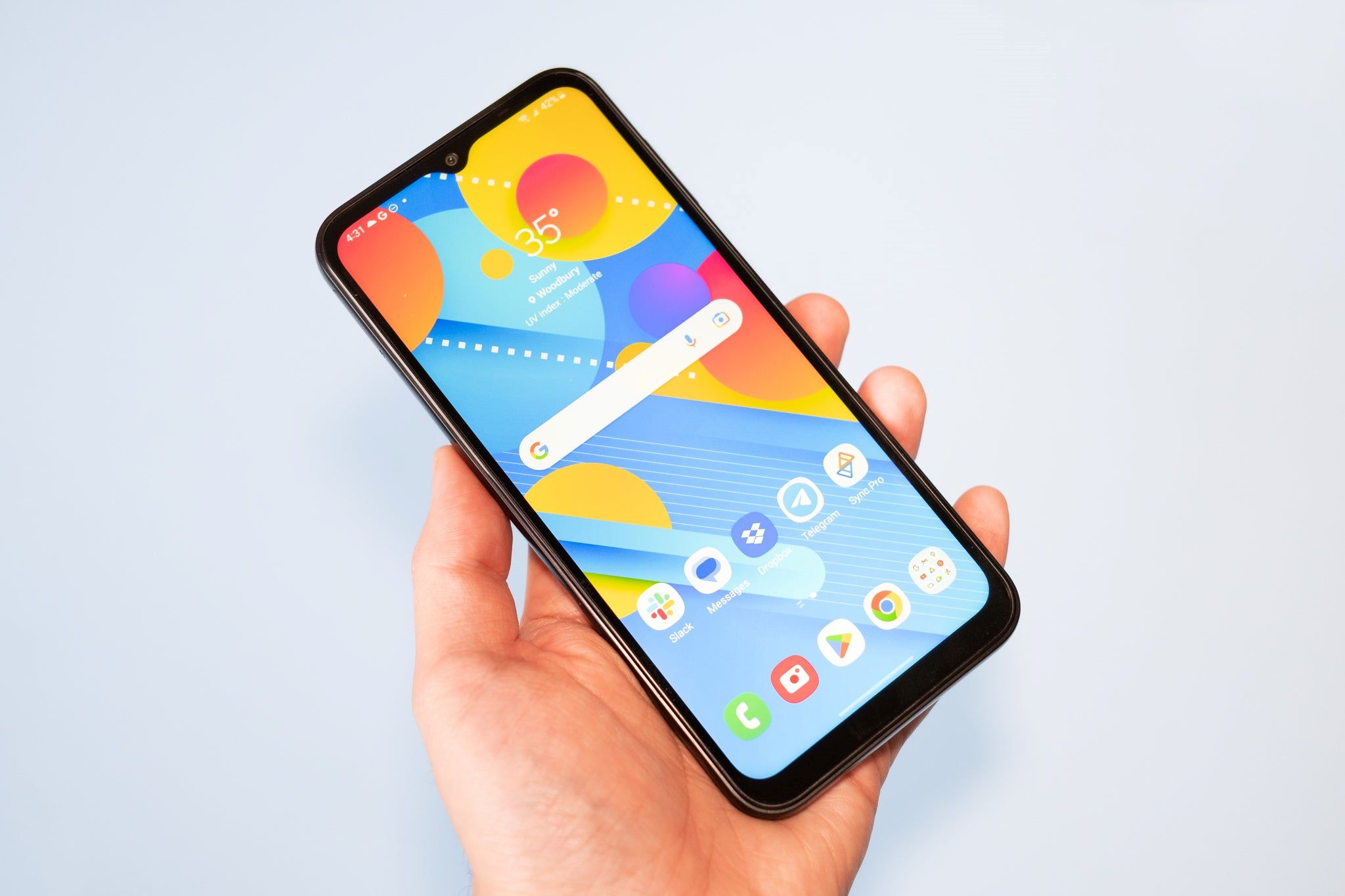What is 5G?
5G, short for fifth generation, is the latest and most advanced wireless technology that is revolutionizing the way we connect and communicate. It is a significant upgrade from the previous generations of wireless technology (2G, 3G, and 4G) in terms of speed, capacity, latency, and connectivity.
Unlike its predecessors, 5G is not just about faster download and upload speeds. It is a complete transformation of the mobile network infrastructure, offering ultra-fast speeds, massive data capacity, minimal latency, and seamless connectivity.
This new generation of wireless technology operates on higher frequency bands, utilizing smaller wavelength signals. This allows for more data to be transmitted and received simultaneously, resulting in lightning-fast download and upload speeds. With 5G, you can download a high-definition movie in a matter of seconds and stream 4K video without any buffering.
Moreover, the reduced latency of 5G enables real-time communication and near-instantaneous response times. This is crucial for applications like autonomous vehicles, remote surgery, and virtual reality, where any delay can have serious consequences.
Another key feature of 5G is its ability to connect a massive number of devices simultaneously. This paves the way for the Internet of Things (IoT) to become a reality, where everyday objects can communicate with each other, creating a smart and interconnected ecosystem. From smart homes to smart cities, 5G technology promises to transform various industries and improve our quality of life.
The Benefits of 5G Technology
5G technology brings forth a plethora of benefits that will transform our lives and revolutionize various industries. Let’s explore some of the key advantages of this groundbreaking technology:
- Lightning-Fast Speeds: One of the most notable benefits of 5G technology is its incredible speed. With download and upload speeds that can reach up to 20 gigabits per second, 5G is significantly faster than its predecessors. This means that tasks such as downloading large files, streaming high-definition videos, and online gaming will become seamless and instantaneous.
- Improved Capacity and Connectivity: 5G technology has a much larger bandwidth compared to previous generations, allowing for a greater number of devices to connect simultaneously. This enhanced capacity and connectivity will pave the way for the Internet of Things (IoT) to flourish, enabling smart homes, smart cities, and interconnected ecosystems.
- Minimal Latency: The low latency of 5G technology is a game-changer, particularly in applications that require real-time communication and instant response times. Industries such as autonomous vehicles, remote surgery, and virtual reality gaming will benefit from the reduced latency, ensuring reliable and seamless user experiences.
- Enhanced Reliability: 5G networks are designed to be more reliable and efficient compared to their predecessors. With advanced technologies like network slicing, which allows for the creation of virtual networks tailored to specific needs, 5G ensures consistent, uninterrupted connectivity even in crowded areas or during peak usage times.
- Enabling Transformative Technologies: 5G serves as a catalyst for various transformative technologies, such as artificial intelligence, augmented reality, and machine learning. These technologies rely on fast and stable connections to deliver their full potential. With 5G, we can expect breakthrough advancements in autonomous vehicles, smart healthcare systems, immersive entertainment experiences, and much more.
As we enter the era of 5G technology, these benefits will have a profound impact on our daily lives, the economy, and society as a whole. From faster communication to enabling cutting-edge innovations, 5G will empower individuals, businesses, and industries to thrive in an increasingly connected and digitized world.
The Current State of 5G Deployment
5G deployment is well underway in many countries around the world, with significant progress being made in expanding coverage and availability. While the rollout of 5G networks is a complex and multi-faceted process, several regions are already experiencing the benefits of this transformative technology.
Currently, 5G networks are being deployed in a phased approach, starting with major urban areas and then expanding to suburban and rural regions. This strategic approach ensures that high-density areas with a higher demand for connectivity are prioritized, while also laying the foundation for widespread coverage.
Several countries have taken the lead in 5G deployment, with South Korea, the United States, and China being at the forefront. South Korea became the first country to launch a nationwide 5G network in April 2019, providing coverage to major cities and transportation hubs.
In the United States, major telecommunication companies have made significant strides in expanding their 5G networks. With Verizon, AT&T, and T-Mobile leading the way, cities like New York, Los Angeles, and Chicago have started to experience the power of 5G technology.
China, known for its ambitious technological pursuits, has made substantial progress in 5G deployment as well. With China Mobile, China Telecom, and China Unicom working towards widespread coverage, the country is on track to have the largest 5G network in the world.
Other countries in Asia, Europe, and the Middle East are also actively deploying 5G networks. Japan, the United Kingdom, Germany, and the United Arab Emirates are among the countries that have made significant advancements in rolling out 5G technology.
It’s important to note that the deployment of 5G is a collaborative effort between telecommunication companies, infrastructure providers, and regulatory bodies. These stakeholders work together to ensure the necessary infrastructure is in place, spectrum allocation is optimized, and regulatory frameworks are established to facilitate the smooth and efficient rollout of 5G networks.
While the current state of 5G deployment is encouraging, there is still work to be done to achieve widespread coverage and availability. As more countries and regions continue to invest in 5G infrastructure, we can expect to see rapid expansion in the coming years, bringing the benefits of 5G technology to a larger population.
When Will 5G Become Available?
The availability of 5G networks varies by country and region, and the timeline for the full coverage and adoption of 5G is a question that many people are eager to have answered. While there is no one-size-fits-all answer, significant progress has already been made, and 5G is becoming available to more people around the world.
In some countries, 5G networks have already been rolled out and are operational in major cities, while in others, the deployment is still in its early stages. Factors such as infrastructure readiness, spectrum availability, and regulatory frameworks play a crucial role in determining when 5G will become widely available.
South Korea was the first country to launch a nationwide 5G network in April 2019, providing coverage to major cities and transportation hubs. The United States has also made significant strides in 5G deployment, with major telecom companies rolling out networks in various cities since then.
China, known for its rapid technological advancements, has been actively deploying 5G networks as well. The country aims to achieve widespread 5G coverage and have the largest 5G network in the world. Other countries in Asia, Europe, and the Middle East are also making progress in their 5G deployments.
It is important to note that the availability and timeline for 5G deployment can vary even within a country. Initially, 5G networks are being deployed in high-density urban areas and then gradually expanding to suburban and rural regions. The aim is to provide coverage where it is needed the most and gradually extend it to a wider population.
The pace of 5G deployment is expected to accelerate in the coming years as telecommunication companies continue to invest in infrastructure, governments allocate additional spectrum, and industry partnerships facilitate the expansion of the technology. By 2025, it is estimated that the majority of the world’s population will have access to 5G networks.
However, it’s important to keep in mind that the full coverage and adoption of 5G will take time and may vary from country to country. Different regions have unique challenges and considerations, and significant investments are required to build the necessary infrastructure and ensure a seamless transition to the new technology.
As the rollout of 5G networks continues, it is advised to stay informed through official announcements, updates from telecom providers, and local authorities to know when 5G will become available in your specific area.
5G Rollouts by Country
5G network rollouts are happening across the globe at a rapid pace, with different countries making significant progress in deploying this transformative technology. Here is an overview of some of the countries leading the way in 5G rollouts:
South Korea: South Korea was the first country to launch a commercial nationwide 5G network in April 2019. The major telecommunication companies in South Korea, including SK Telecom, KT Corporation, and LG Uplus, have been at the forefront of 5G deployment, providing coverage to major cities and transportation hubs.
United States: The United States has made substantial strides in 5G rollouts. Major telecommunication companies such as Verizon, AT&T, and T-Mobile have been actively expanding their 5G networks across the country. Cities like New York, Los Angeles, and Chicago are among the early adopters enjoying the benefits of 5G technology.
China: China is aggressively deploying 5G networks and aims to have the largest 5G network in the world. With China Mobile, China Telecom, and China Unicom leading the rollout, major cities in China, including Beijing and Shanghai, have already experienced the power of 5G technology. The country’s ambitious plans include massive infrastructure investments and a focus on commercializing 5G applications.
Japan: Japan has been actively working on 5G deployment, with major telecommunication companies like NTT Docomo, SoftBank, and KDDI leading the way. Japan successfully hosted the 2020 Olympic Games in Tokyo, where 5G technology played a significant role in delivering immersive fan experiences and enhancing the event’s broadcast capabilities.
United Kingdom: The United Kingdom is making progress in rolling out 5G networks, with major telecom providers like EE, Vodafone, and Three leading the charge. Cities like London, Manchester, and Birmingham have seen the early adoption of 5G technology, transforming industries and enhancing connectivity for businesses and consumers.
Germany: Germany has been actively deploying 5G networks, with main telecom operators like Deutsche Telekom, Vodafone, and Telefónica leading the way. The country is focusing on expanding 5G coverage in urban areas and plans to use 5G for various applications, including smart manufacturing, autonomous driving, and smart city initiatives.
Australia: Australia has been progressing in the 5G rollout, with major telecommunication companies like Telstra, Optus, and Vodafone laying the groundwork for widespread coverage. Sydney, Melbourne, and Brisbane have seen significant advancements in 5G deployments, paving the way for enhanced connectivity and transformative technologies.
These are just a few examples of countries at the forefront of 5G rollouts. Many other countries, including Sweden, Finland, Spain, and the United Arab Emirates, are also actively deploying and expanding 5G networks to provide faster, more reliable, and interconnected communication for businesses and individuals alike.
With continuous investments in infrastructure, spectrum allocation, and regulations, more countries are expected to join the 5G revolution in the coming years, bringing the benefits of this technology to a global scale.
Major Telecommunication Companies and Their 5G Rollouts
5G rollouts are being driven by major telecommunication companies around the world. These companies invest heavily in infrastructure, research and development, and partnerships to bring the benefits of 5G to their customers. Let’s take a look at some of the key players in the 5G landscape and their contributions:
Verizon: Verizon is a leading telecommunication company in the United States and has been at the forefront of 5G deployments. They launched their 5G network in select cities, including New York City, Chicago, and Los Angeles, and have been expanding coverage across the country. Verizon is known for its focus on millimeter-wave technology, which delivers ultra-fast speeds and low latency.
AT&T: AT&T is another major player in the 5G space in the United States. They launched their 5G network in select cities and have been steadily expanding coverage. AT&T uses a combination of millimeter-wave and sub-6 GHz spectrum to provide a balance of speed and coverage. They also offer 5G services to business customers, enabling them to take advantage of the technology’s transformative capabilities.
T-Mobile: T-Mobile, one of the largest wireless carriers in the United States, has been actively rolling out its 5G network. T-Mobile utilizes both mid-band and millimeter-wave spectrum to deliver a balance of speed and coverage. With their merger with Sprint, T-Mobile aims to create an expansive nationwide 5G network, reaching a larger customer base with enhanced connectivity.
China Mobile: China Mobile is the largest telecommunication company in the world in terms of subscribers and has been a key player in 5G deployments in China. They have been actively expanding their 5G network, providing coverage to major cities and provinces. China Mobile is focusing on building a robust 5G infrastructure to support various applications, including smart cities, autonomous vehicles, and industrial automation.
Vodafone: Vodafone is a global telecommunications company with a significant presence in Europe and other regions. They have been actively rolling out 5G networks across multiple countries, including the United Kingdom, Germany, Italy, Spain, and more. Vodafone aims to bring the benefits of 5G to businesses and consumers, enabling them to harness the power of ultra-fast speeds and low latency for innovative applications.
NTT Docomo: NTT Docomo is a major telecommunications company in Japan and has been a driving force in 5G deployments. They have been expanding their 5G network coverage in major cities and are actively collaborating with industry partners to explore various 5G applications, such as smart cities, remote healthcare, and autonomous driving.
These are just a few examples of major telecommunication companies that are leading the way in 5G rollouts. Other notable players include China Telecom, Deutsche Telekom, SK Telecom, and more, each contributing to the expansion and adoption of 5G technology in their respective countries.
Through their investments, partnerships, and technological advancements, these telecommunication companies are opening up new possibilities for businesses and consumers, enabling faster and more reliable connectivity, empowering innovative applications, and paving the way for a more connected future.
The Challenges and Considerations of Implementing 5G
While the implementation of 5G brings numerous benefits, there are also several challenges and considerations that need to be addressed. The deployment of 5G networks requires a comprehensive approach, taking into account various factors related to infrastructure, technology, security, and societal impact. Let’s explore some of the key challenges and considerations:
Infrastructure: One of the primary challenges of implementing 5G is building the necessary infrastructure. 5G requires a denser network of small cells due to its higher frequency bands. This means that more antennas and base stations need to be installed, which can require significant investment and coordination with local authorities for permits and access to infrastructure sites.
Spectrum Allocation: Another challenge is spectrum allocation as 5G networks require access to a broad range of frequencies. Governments and regulatory bodies need to allocate and manage spectrum resources efficiently to ensure enough capacity for 5G networks. Spectrum auctions and the coordination of frequency bands at national and international levels are critical considerations for successful 5G implementation.
Technology Integration: Implementing 5G requires integration with existing network infrastructure. Legacy systems and technologies need to be upgraded or replaced to support the higher speeds and increased capacity offered by 5G. This integration can be complex and time-consuming, requiring careful planning and coordination to ensure a smooth transition.
Security: As with any advanced technology, security is a significant consideration. With the proliferation of connected devices and increased data usage in the 5G era, ensuring the security and privacy of data becomes paramount. Protecting the network infrastructure, preventing cyber threats, and addressing potential vulnerabilities are ongoing challenges that need to be addressed at every level of the 5G ecosystem.
Societal Impact: The deployment of 5G also raises societal considerations. There may be concerns about potential health effects related to increased exposure to high-frequency electromagnetic radiation, although extensive research has not demonstrated any clear evidence of harm. Additionally, bridging the digital divide and ensuring equitable access to 5G technologies is crucial to prevent further disparities in connectivity and digital inclusion.
Regulation and Standards: The development of standards and regulations for 5G implementation is critical to ensure interoperability and compatibility across different networks and devices. Standardization bodies and regulatory authorities need to work together to create a cohesive framework that allows for seamless integration, global compatibility, and adherence to privacy and security standards.
Addressing these challenges and considerations requires collaboration among governments, telecommunication companies, technology vendors, and other stakeholders. By engaging in dialogue, investing in research and development, and adhering to best practices, the implementation of 5G can be more effectively managed and its benefits fully realized.
The Impact of 5G on Various Industries
5G technology is set to have a transformative impact across various industries, revolutionizing the way businesses operate and unlocking new opportunities for innovation. Let’s explore some of the key industries that will experience significant changes with the advent of 5G:
Healthcare: The healthcare industry stands to benefit immensely from 5G. With its ultra-low latency and fast speeds, 5G enables real-time remote consultations, telemedicine, and remote surgery. Healthcare professionals will have access to accurate and timely data, allowing for better diagnoses, improved patient monitoring, and enhanced delivery of care, especially in remote or underserved areas.
Manufacturing: 5G is set to revolutionize the manufacturing sector through enhanced automation and the Internet of Things (IoT). With its unprecedented speed and connectivity, 5G enables real-time monitoring and control of machines, optimizing production processes, reducing downtime, and improving operational efficiency. Smart factories powered by 5G will have improved safety, quality control, and customization capabilities.
Transportation: The transportation industry is poised for a significant transformation with 5G technology. From autonomous vehicles to connected transportation systems, 5G enables faster data exchange, enhanced communication between vehicles, and improved traffic management. This will lead to safer roads, reduced congestion, and more efficient logistics and supply chain operations.
Entertainment and Media: 5G will revolutionize the entertainment and media industry, enabling ultra-high-definition streaming, immersive virtual reality experiences, and interactive gaming. With its low latency and high bandwidth, 5G will provide seamless and immersive content delivery, allowing for new forms of entertainment and enhancing user experiences.
Smart Cities: 5G technology will play a crucial role in the development of smart cities. With its massive connectivity and low latency, 5G enables efficient management of resources, improved public safety systems, and intelligent infrastructure. Smart city applications powered by 5G include smart lighting, smart grids, traffic management, waste management, and more, all aimed at creating sustainable, livable cities.
Retail: The retail industry will also see significant changes with the adoption of 5G technology. With faster and more reliable connectivity, retailers can provide personalized and immersive shopping experiences through augmented reality and virtual reality. Furthermore, 5G enables real-time inventory management, supply chain optimization, and enhanced customer engagement through connected devices.
Education: 5G has the potential to revolutionize education by enabling remote learning experiences, virtual classrooms, and access to educational resources from anywhere in the world. With the fast and reliable connectivity of 5G, students and educators can collaborate seamlessly, access interactive online content, and participate in immersive learning experiences that were previously limited by bandwidth constraints.
These are just a few examples of the industries that will benefit from 5G technology. From healthcare to manufacturing, transportation to entertainment, and beyond, 5G’s fast speeds, low latency, and massive connectivity will unlock new possibilities, improve efficiencies, and drive innovation across multiple sectors.
5G Use Cases and Potential Applications
5G technology brings a wide range of use cases and potential applications that have the potential to transform industries and enhance various aspects of our daily lives. Let’s explore some of the key use cases and potential applications of 5G:
Internet of Things (IoT): 5G will serve as a catalyst for the Internet of Things, enabling billions of connected devices to communicate seamlessly. From smart homes to smart cities, 5G will provide the necessary connectivity to power IoT applications like smart lighting systems, intelligent transportation, connected healthcare devices, and more.
Autonomous Vehicles: 5G technology is essential for the development and deployment of autonomous vehicles. With ultra-low latency and fast speeds, 5G enables real-time communication between vehicles, infrastructure, and the cloud. This ensures safe and reliable autonomous driving, improved traffic management, and enhanced road safety.
Virtual Reality (VR) and Augmented Reality (AR): 5G’s high bandwidth and low latency are perfect for immersive technologies like VR and AR. With 5G, users can experience realistic virtual environments, enjoy seamless streaming of VR/AR content, and engage in collaborative experiences through remote AR-assisted communication.
Remote Surgery: The low latency and high reliability of 5G enable real-time communication between surgeons and robotic systems, making remote surgery a reality. Expert surgeons can provide guidance and perform surgeries from remote locations, bringing specialized care to underserved areas and improving access to critical medical procedures.
Smart Agriculture: 5G can revolutionize the agriculture industry by enabling real-time monitoring, precision farming, and autonomous farming equipment. With 5G, farmers can collect and analyze data from sensors, drones, and satellites, making informed decisions about crop management, irrigation, and livestock health.
Industrial Automation: 5G plays a crucial role in the advancement of Industry 4.0 by enabling real-time monitoring, remote control, and predictive maintenance of industrial equipment. With 5G, factories can achieve increased productivity, reduced downtime, and improved efficiency through connected machines, robotics, and data-driven automation.
Smart Grids: 5G technology can enhance the efficiency and reliability of energy distribution through smart grids. With 5G, utilities can monitor and manage power grids in real-time, optimize energy distribution, detect and respond to outages faster, and enable energy consumption optimization for end-users.
Emergency Services: 5G’s reliable and high-speed connectivity is crucial for emergency services such as police, fire departments, and healthcare providers. With 5G, emergency responders can communicate seamlessly in real-time, access critical data and video feeds, and improve response times during crises and emergencies.
These are just a few examples of the diverse use cases and potential applications of 5G technology. From transforming industries to improving quality of life, 5G’s fast speeds, low latency, and massive connectivity will unlock a multitude of opportunities, accelerating technological advancements and driving innovation in numerous sectors.
Conclusion
5G technology is poised to revolutionize the way we connect, communicate, and interact with the world around us. With its lightning-fast speeds, low latency, and massive connectivity, 5G brings a myriad of benefits and transformative potential across various industries and sectors.
From healthcare to manufacturing, transportation to entertainment, 5G will enable innovations that were previously unimaginable. Real-time remote surgery, autonomous vehicles, immersive virtual reality experiences, and smart cities are just a glimpse of what 5G has to offer.
However, the deployment of 5G also comes with its own set of challenges and considerations. Building the necessary infrastructure, ensuring spectrum allocation, addressing security concerns, and managing the societal impact are crucial factors that need to be carefully managed to maximize the potential of 5G.
Telecommunication companies, governments, technology vendors, and other stakeholders have a vital role to play in the successful implementation and adoption of 5G technology. Collaboration, investments in research and development, and adherence to standards and regulations will be key to unlocking the full potential of 5G and ensuring its equitable access for all.
As we continue to witness the global rollout of 5G networks and the transformation they bring, it is essential to stay informed and embrace the possibilities that this revolutionary technology offers. Whether it’s enabling innovative healthcare solutions, unlocking new opportunities for businesses, or creating more connected and sustainable communities, 5G is set to reshape our world as we know it.

























